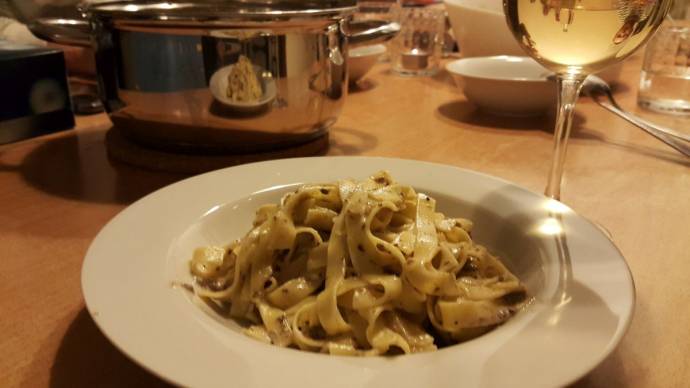January 31, 2018
Truffles can be found all around the world along the 45th parallel, where the right trees grow and the ground and climate are usually good for the production of wine as well. One of the places where both black and white truffles, the latter considered much better, hide in the grounds is Istria, with a small part reaching into the state of Slovenia and the majority of it belonging to Croatia.
There are two stories associated with the discovery of truffles in Istria, both set about 80 years ago. The first goes that Istrian truffles were discovered by a rich Italian woman, how exactly this came to be is not clear, while the second story claims that they were accidentally dug out during the construction of an aqueduct. Whatever the case, in Slovenia, truffles were on the list of endangered species and hence banned from hunting and trading till 2011, when Istrians managed to persuade the authorities that picking does not damage the mushrooms, but instead bad land and flora management and perhaps even high numbers of wild boars, who tend to make a complete mess when digging for them. The ban certainly didn’t prevent locals from continuing digging for these musky and mysterious fungi growing in their backyards, or even a bit further into the trees and even sell them, albeit not on official restaurant menus, at least not until 2011, when truffles became part of the offer at any serious Istrian Oštarija.
It is perhaps not surprising to hear of boars digging for truffles, since pigs are often associated with sniffing out these underground fungi. Nevertheless, truffle hunting is done exclusively by dogs in Istria, who in reward for their finds get some canine treats, which are apparently good enough to prevent the animals from eating what their masters crave.
But how are truffles usually eaten in Slovenia?
Here, as well as Croatia, truffles are generally eaten with pasta in a simple cream-based sauce. If you manage to get them fresh, you simply grate them over melted butter, and whether you stir fry garlic or onions as a base is up to you, although I personally prefer none at all, since the small and taste of truffles is what this dish is all about. After your truffles have cooked enough, just a minute or two, add cream and some salt and pepper, mix into cooked pasta and top with some grated parmesan.
If you can’t get fresh truffles, which is most likely the case, things get even simpler. Jars of tartufata (truffle containing pastes with various other ingredients, such as olives or mushrooms of lower grade, like champignons or porcinis) can be found in pretty much every supermarket in Slovenia. We have tried a whole black truffle stored in oil and sold in in a jar, but this turned out very disappointing, completely lacking the distinctive smell and taste. What worked best was Zigante’s 130g tartufata, which has been used to coat enough past for four.

The best pasta, of course, is the kind you make yourself, but if time is an issue then fusi (fuži) is the traditional choice here, although fusilli work even better in my opinion.

fusi vs. fusilli
We did, however, use homemade rezanci (rezan as in “cut) or fettuccini in Italian, and they were just perfect: For each egg (whole) we used 100 g of semolina flour (“ostra moka” in Slovenian, in contrast to “mehka”, finely ground flour, the particles of “ostra” are a bit larger), knead the dough well, roll it thinly (if you have a rolling and pasta cutting machine, you win), and cut into 1/5 to 1 cm wide strips. If you aren’t going to use it all immediately, dry and save some for another day. This is what we used:

We put about 300g of our rezanci into salted boiling water for about 5 minutes (the cooking time depends on thickness, just make sure you don’t overcook them, better under- than overcooked, especially if homemade).
Meanwhile we prepared the sauce: in a heated pan we melted a small chunk of butter, throw on it the entire contents of the jar of tartufata, poured 125 ml of fresh cream over it, and since fresh cream can be quite sweet, we added some salt as well.
We then strain the pasta, put it back into the pot, pour hot truffle sauce over it and stir gently with a spoon.
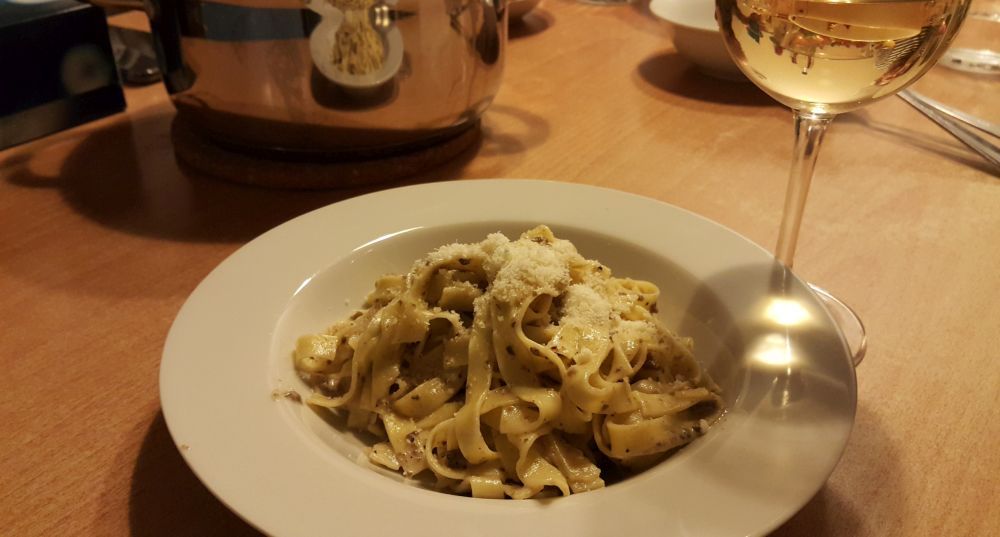
Ingredients we used for the sauce:
130g Zigante tartufata
125ml fresh cream
salt
1 bag of grated Grana Padano cheese, or in one piece and grate it yourself if you prefer
Salad
To balance out the high levels of carbos, such truffled pasta must be combined with a salad.
The most common combination I have observed is a raddichio (radič) salad with eggs, seasoned with balsamic vinegar, salt, olive oil and garlic. As we managed to get some fresh young radicchio straight from the garden, we also opted for the second salad version, the same as the first, but without eggs.
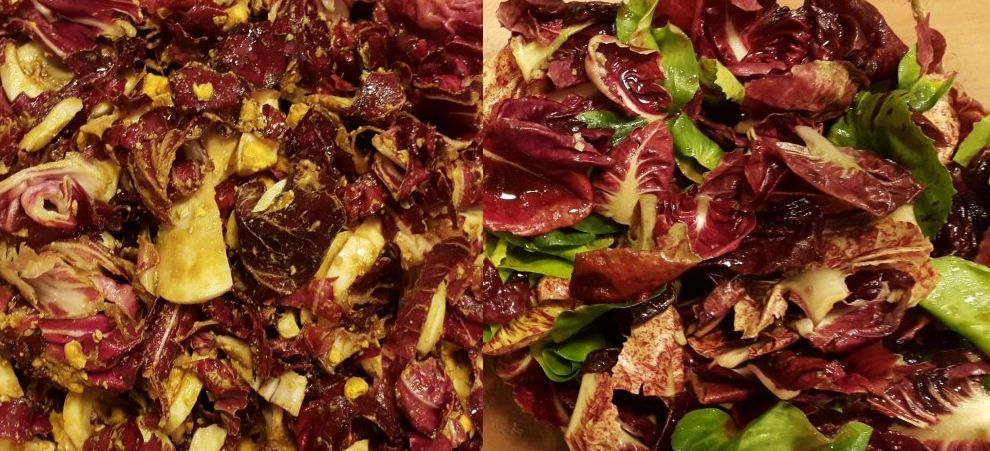
As we knew that all this would take very little time, so we started cooking lunch with the dessert. To stay within the Mediterranean for this as well, we opted for pretty much the simplest possible carob cake recipe, which is quite difficult to mess up, even if mistakes are made in the process, such as adding the baking powder at the end, because we forgot to add it to the flour at the beginning. Here is what you will need to make it:
Carob cake ingredients:
180ml (a yogurt cup) of wheat flour
1 bag (12g) of baking powder
180ml of carob flour (ground carobs)
180ml of sugar
100 ml of coconut oil
4 large eggs
3 spoons of (bitter) cocoa powder
2 spoons of milk (optional, if too dry)
3 fists of yellow raisins
100ml of rum
4 peeled and grated apples
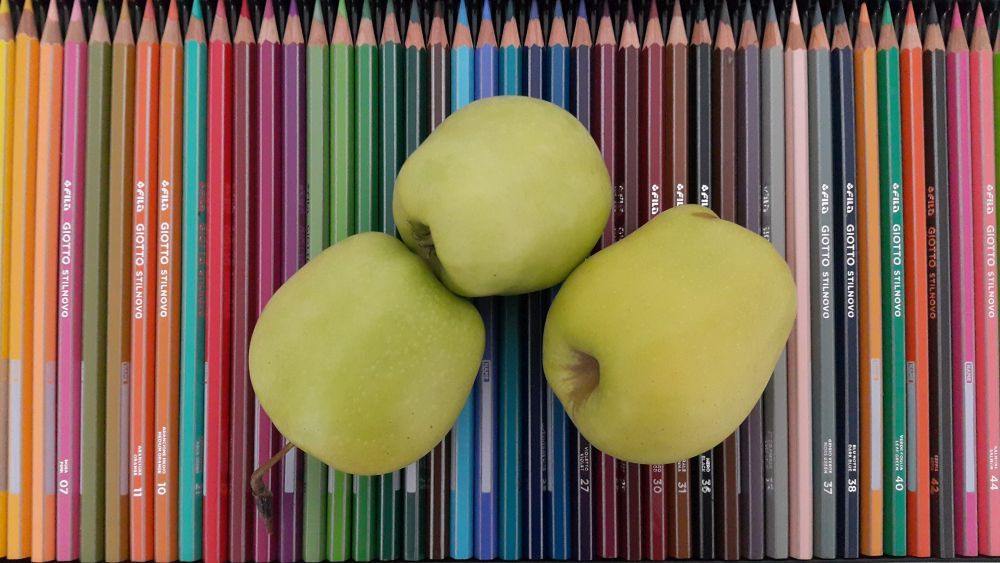
The size of the apples we used, there are three in the picture but we actually used four – they were not felt in the cake at all, so we wish we’d used more, but if you prefer not to notice them, stay with this amount.
Glaze (ganache):
125ml fresh milk cream
150g cooking chocolate (best Gorenjka)
50ml of domači (vanilla flavoured, dark) rum
We put the raisins into the rum to soak for a while.
Preheat the oven to 180 degrees Celsius. Coat the baking tray with butter and flour.
Separate the egg yolks from egg whites, beat the egg whites, add half the sugar, beat some more till sharp peaks form.
We add the rest of the sugar to the egg yolks, beat till a lighter colour, add coconut oil, flour and baking powder, stir well, add carob flour, stir, if too dry add some milk, then mix in the grated apples and raisins (without the rum, which can now be used for sailor’s coffee). Stir in the whipped egg foam, fill the tray with the final mixture, and bake for about 30-40 minutes.
Meanwhile, melt the chocolate in fresh cream and rum until smooth and pour it over the freshly baked hot cake. The cake can be served while still warm, although the one in the picture was already cold and still tasted good.
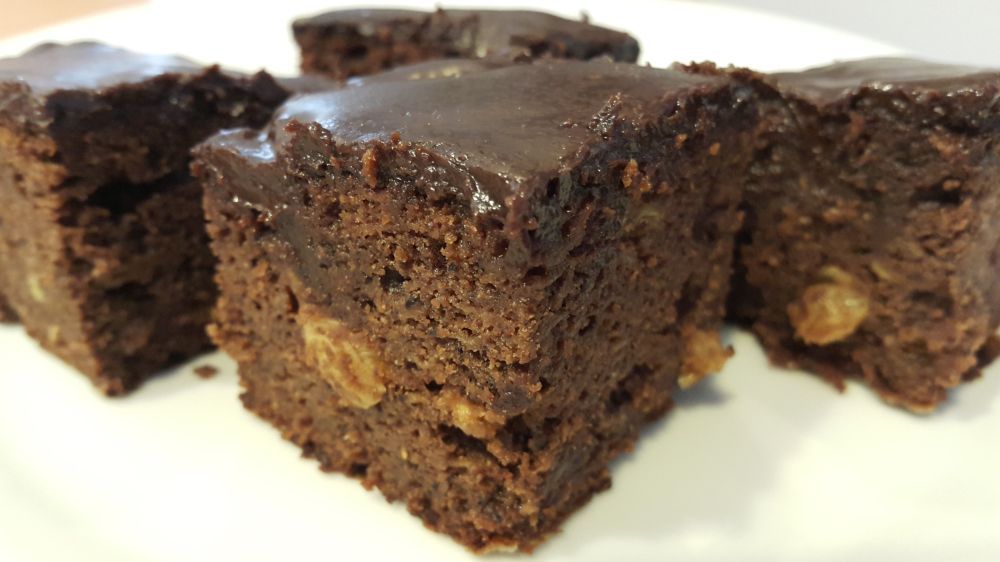
Dober tek!

